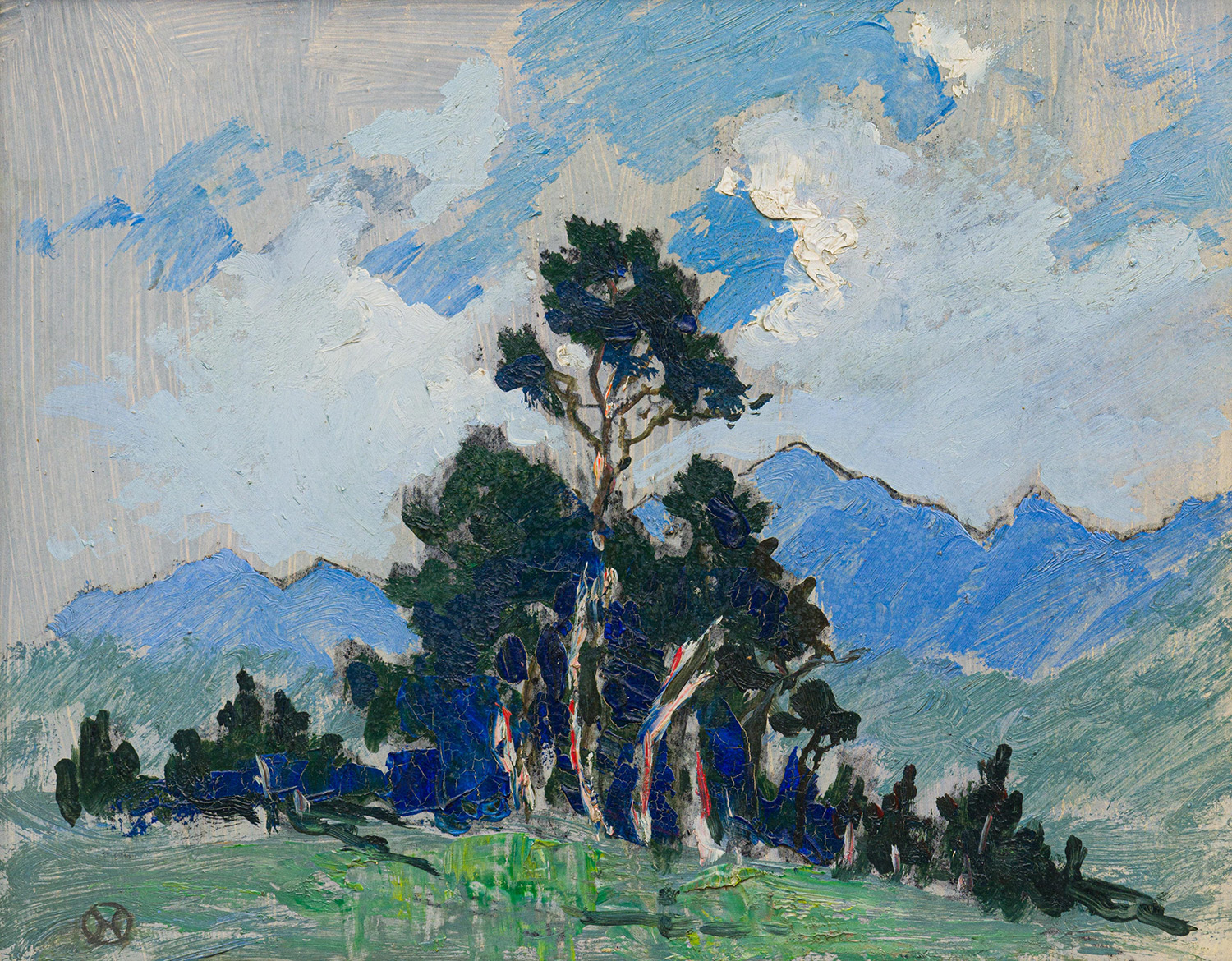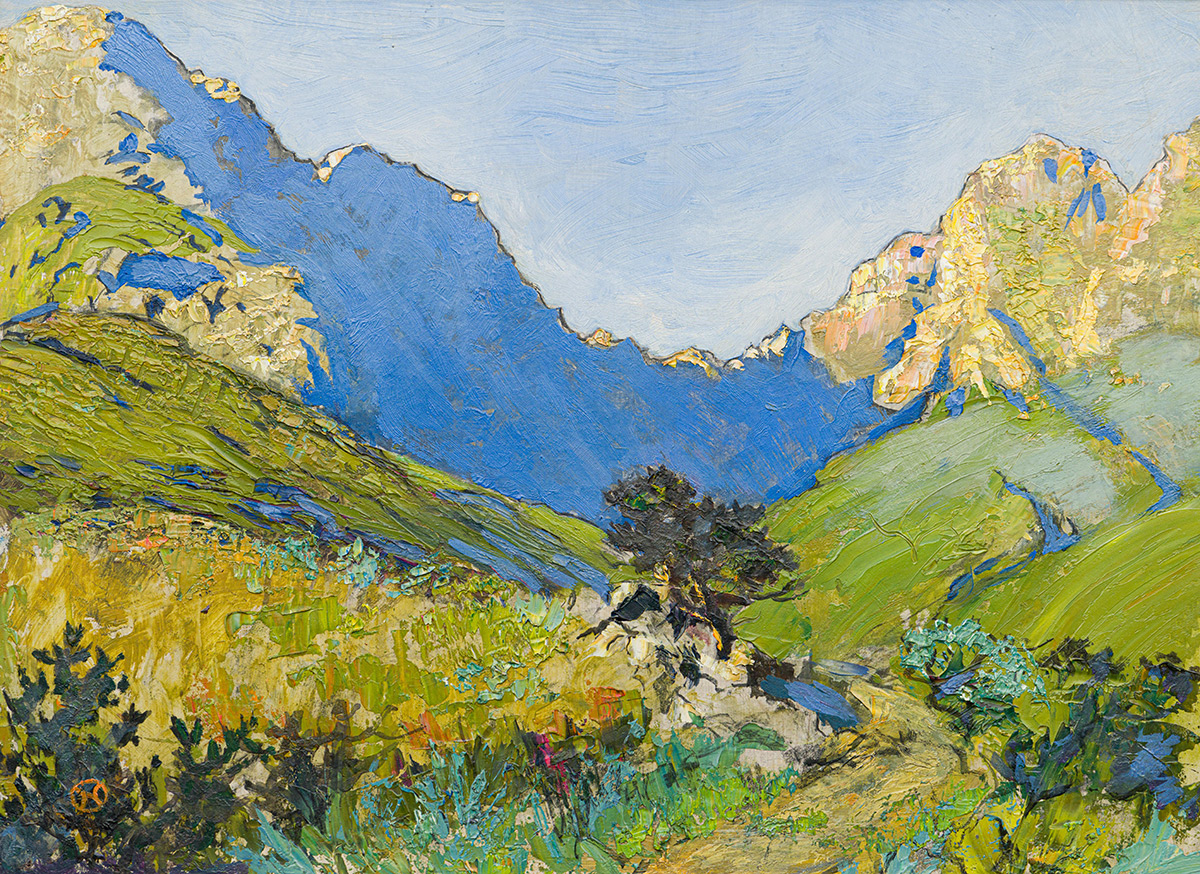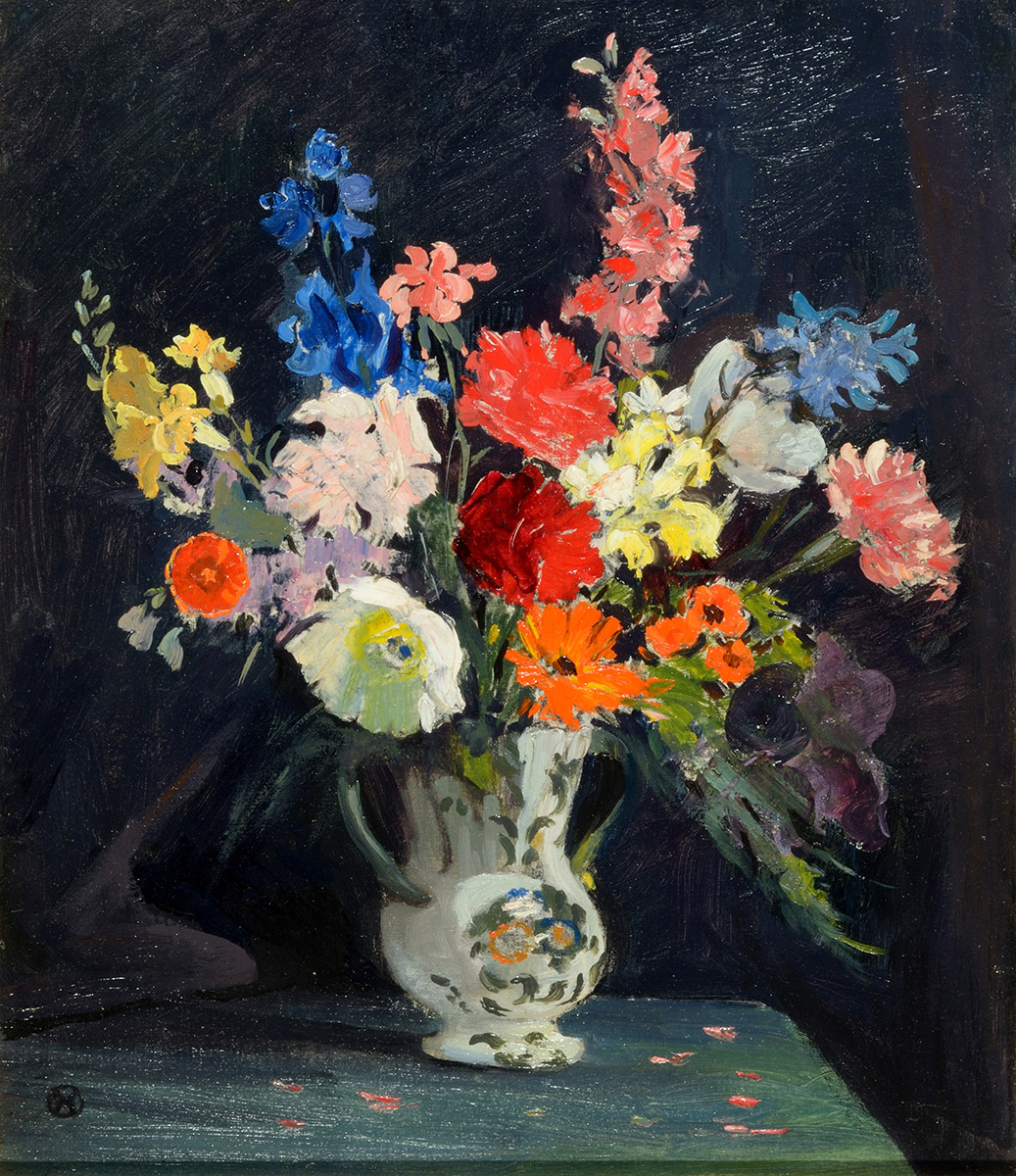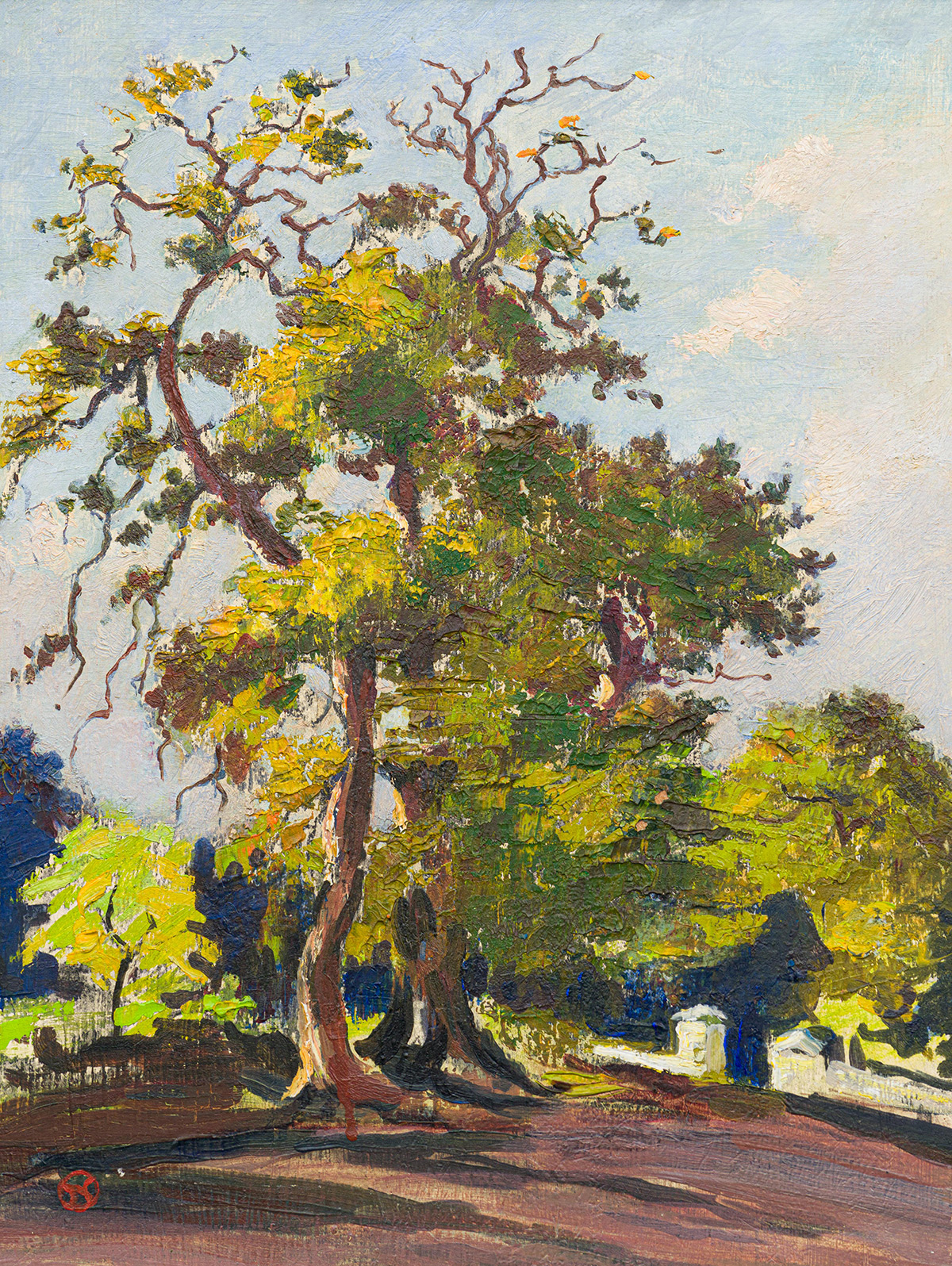Nita (Pauline Augusta Wilhelmina) SPILHAUS (1878 – 1967)
BIOGRAPHY
Born in Lisbon, Pauline Augusta Wilhelmina Spilhaus was a Portuguese-South African painter, who worked in oil, watercolour and pastel.
After the loss of both her parents during her infancy, she was raised by her grandfather in Lübeck, Germany, and her first training in drawing and etching took place at the Lübeck School of Art, then at a private art school in Munich and at the Dachau art colony just outside of Munich. She was part of a young artists’ community in Schwabing and, in 1900, published a folio of her etchings.
She moved to the Cape Colony in 1907 following the death of her grandfather, joining her brother Karl, and the family of her uncle Arnold Wilhelm Spilhaus at his home ‘Hohenort’ in Constantia. Gradually, she made friends with a group of artists, among them Edward Roworth, Moses Kottler, Allerly Glossop, Pieter Wenning, Ruth Prowse, Hugo Naudé, and Florence Zerffi. It was Zerffi who nursed her back to health during the 1918 flu pandemic.
Working from a studio in Keerom Street, Spilhaus established herself as a leading member of Cape Town’s art community. Her most active artistic period was this time she spent in Cape Town as part of a close-knit group of artist friends, working and exhibiting together. She was principally an Impressionist landscape artist, best known for her atmospheric oil paintings and vivid etchings of trees, the Cape mountains, and the Malay Quarter. The Stone Pines around Cape Town are a recurring theme in her work.
In a frenzy of wartime paranoia, her brother was charged with being a German conspirator, and she, also a German national, was severely restricted in her movements during World War I. She was only permitted to paint indoors, which resulted in a large number of still lifes. She applied for a position as curator of the Michaelis Collection, but her German provenance disqualified her.
She married Ernst Simon in 1921 and the couple returned to Munich in 1925. In 1938, just before World War II, they moved back to South Africa to stay. Simon died in 1943.
In the 1950s, Spilhaus and her widowed sister moved to Jonkershoek Valley. The progressive loss of her eyesight forced her to cease painting.
The depth and breadth of her artistic subject matter are explored in Peter Elliott’s book Nita Spilhaus (2015).





